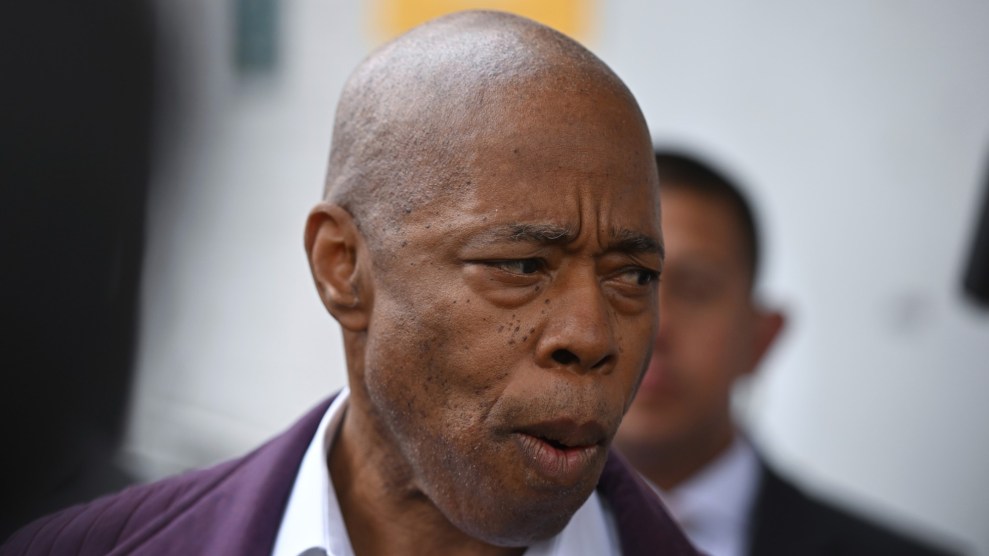When people arrive at the border seeking asylum from persecution, the United States gives them the benefit of the doubt. As long as they can show there’s a “significant possibility” that they deserve protection, they’re allowed to stay and make their case to an immigration judge. President Donald Trump and Republicans in Congress want to change that.
On Sunday, the Trump administration demanded that Congress overhaul the US asylum system as part of any legislation to protect the nearly 700,000 undocumented immigrants known as Dreamers from deportation. The White House’s asylum proposal, laid out in nine bullet-pointed items as part of the broader immigration plan, appears to be modeled on the Asylum Reform and Border Protection Act, a bill that Republicans on the House Judiciary Committee approved in July. The bill, which has not been passed by the full House, would make it easier for the Department of Homeland Security to quickly reject asylum claims and force most asylum seekers to remain in detention while their cases are decided. The overall effect would be to transform a system for protecting persecuted people, created in the wake of World War II, into a much more adversarial process.
At a hearing in July, Rep. Zoe Lofgren (D-Calif.) warned that the GOP proposal would “all but destroy the US asylum system.” Now Trump is trying to fold those changes into a deal to protect the Dreamers—undocumented immigrants who came to the country as children—who were previously covered by Barack Obama’s Deferred Action for Childhood Arrivals program.
Eleanor Acer, an expert on refugees at the advocacy group Human Rights First, said in a statement Monday that Trump’s demands will “block those fleeing persecution and violence from even applying for asylum, and punish those who seek protection by preventing their release from immigration detention facilities and jails.”
But Republicans like Rep. Bob Goodlatte (R-Va.) argue that asylum reform is needed to address “pervasive” fraud, such as false claims of persecution. Asylum claims from the “Northern Triangle” countries of Guatemala, El Salvador, and Honduras have been a major focus for Republicans. Between 2013 and 2015, there were more asylum claims from the Northern Triangle, which has been terrorized by MS-13 and other gangs, than in the previous 15 years combined. A 2015 report from the Government Accountability Office found that the United States has “limited capabilities to detect asylum fraud.” But the scope of the problem is not known. Leah Chavla, a program officer at the Women’s Refugee Commission, says going after fraud is misguided in light of the many checks and balances that are already in place.
Trump’s proposal calls for raising the standard of proof for asylum seekers to establish that they have a “credible fear” of persecution, entitling them to make their case to a judge. That tracks language in the House bill that would require asylum seekers to show in their initial screening that is “more probable than not” that they deserve asylum. Immigrant advocates say that threshold, which would replace the “significant possibility” standard that exists today, is ill-suited to the realities of seeking asylum. Asylum seekers often don’t have a lawyer and may be exhausted from their time in immigration detention when the initial screening with an asylum officer takes place, says Olga Byrne, an asylum and refugee expert at Human Rights First. As a result, the screenings are designed to weed out what Byrne calls “obviously frivolous cases.”
David Bier, an immigration policy analyst at the libertarian Cato Institute, believes it’s “absurd” to expect asylum seekers to be able to prove their claims soon after they arrive. “Many asylees have to flee under cover of darkness or swim through streams to escape their persecutors,” he wrote in July. “They often set out without any concept of where they will end up, let alone with documentary evidence in their pockets.”
In the 75 percent of cases where a “credible fear” of persecution is established, the asylum seeker then faces the more difficult task of convincing an immigration judge to allow him or her to stay in the United States indefinitely. In the 2016 fiscal year, 57 percent of asylum claims were denied, according to data from the nonpartisan Transactional Records Access Clearinghouse. Due to a 632,000-case backlog in immigration courts, asylum seekers often spend months, and sometimes more than a year, in detention while they wait for their cases to be decided. (The Supreme Court will decide this term whether detaining asylum seekers without a bond hearing is constitutional.)
In 2009, the Obama administration ordered US Immigration and Customs Enforcement to release asylum seekers from detention if they did not pose a danger to others or a flight risk, though it later changed that policy as part of its effort to deter Central American migrants. Trump’s proposal calls vaguely for ensuring “only appropriate use” of the executive branch’s authority to release asylum seekers. That is similar to language in the House bill that would block the president from releasing large groups of asylum seekers. People who remain in immigration detention are much less likely to have a lawyer and win their cases, according to a 2015 study published in the University of Pennsylvania Law Review.
Trump’s framework also says Congress should expand the administration ability to return asylum seekers to “safe third countries.” Again, that follows language in the House bill that would allow asylum seekers to be sent to Mexico, even if they are from other countries. Mexico does not want to receive these asylum seekers and is already struggling to deal with its own surge in asylum claims by Central Americans. Under the Republican bill, unaccompanied child migrants could be among those sent to Mexico, where more than 2,200 people were murdered in June, the deadliest month on record.
The Trump administration has already taken steps to make it harder to obtain asylum. In February, the Department of Homeland Security released a memo that makes it easier for asylum officers to reject asylum claims. Advocacy groups have also reported that border officials are now more likely to summarily reject asylum claims when people present themselves at the border. And in June, the Trump administration ended a program that paired 630 families seeking asylum—almost all of them Central American mothers and children—with social workers who help them navigate life in the United States. The women are likely to be tracked by ankle monitors instead, the Associated Press reported in June.
If Trump’s demands become law, the US asylum system will change fundamentally. Those calling for the reforms are “just trying to get people in and out as quickly as possible,” Chavla says. “And there’s no regard for their protection. There’s no regard for due process.”
Republicans’ asylum proposals “don’t just chip away at our nation’s asylum program,” Lofgren said in July. “They decimate it.”


















